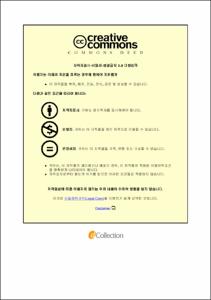Development of Game-Based Vidyanusa Mathematics Learning Systems Using Balanced Designing
- Abstract
- 학습에 기반한 게임 개발은 학생들이 경험을 얻고, 게임을 함으로써 학습자료들을 이해하고 문제를 해결하는 데에 있어 효과적인 학습방식중의 하나이다. 여기서 ‘재미’라는 요소는 학습할 때 게임 이용을 위한 계기가 되는 게임을 할 때 얻어지게 된다. 그러나 게임을 하는 학생들이 실제로 그들이 이러한 게임을 하는 동안 학습을 하게되는 지에 대한 의문이 생기게 된다.
비댜누샤는 인도네시아의 Crayonpedia 교육 시스템에 의해 개발된 온라인 수학 교육 게임을 말하게 된다. 비다누샤의 학습 목표는 중학교 학생들이 수학을 배우는 데 있어 효율적인 학습을 할 수 있도록 하는 것이다. 비다누샤에 포함된 콘텐츠는 인도네시아 교육과정에 맞게 레벨 7, 8, 9 수준의 수학 과목을 포함하고 있다. 전체적으로 중학생 레벨 7, 8, 9를 위한 수학과목에서 77개의 핵심 기능이 있고, 이러한 기능들은 정서적이고, 인식적이고 그리고 정신운동적인 요소를 포함하고 있다. 비두나샤는 모든 요소를 요약하게 되고 그들 모두를 23개의 임무로 변형하게 된다.
이 논문의 목표는 Balanced Design 접근 방법을 사용함으로써 게임 학습 자료의 기능과 관계들을 설계하는 것이다. 이러한 접근은 연속적으로 3가지 모델이 존재하는데, 먼저 Content Model은 게임의 목표를 개요화하며, Task Model은 임무들을 매핑하며, 마지막으로 Evidence Model은 학생 평가를 개요화하게 된다.
- Issued Date
- 2016
- Awarded Date
- 2016. 2
- Type
- Dissertation
- Publisher
- 부경대학교 대학원
- Affiliation
- 부경대학교 대학원
- Department
- 대학원 정보시스템협동과정
- Advisor
- 박만곤
- Table Of Contents
- Contents i
List of Tables iii
List of Figures iv
Abstract vi
Chapter 1 Introduction 1
1.1. Background 1
1.2. Problem Statement 4
1.3. Thesis Objective 5
1.4. Scope 5
1.5. Thesis Outline 6
Chapter 2 Related Works 7
2.1. The Lure of the Labyrinth 7
2.2. Radix Endeavor 9
2.3. Comparison 11
Chapter 3 Literature Reviews 13
3.1. Balanced Design 13
3.2. Digital Game Based Learning 16
3.3. Function of Game Education 17
3.4. Elements of Game 18
3.5. Role of Play 20
3.6. Curriculum 2013 22
3.7. Mathematics Subject 28
3.8. Software Product Quality 29
Chapter 4 System Requirements and Design 32
4.1. System Architecture 32
4.2. Functional Requirements 34
4.3. System Environment 38
4.3.1. Narrative 38
4.3.2. Asset 38
4.3.3. Area and Missions 40
4.3.4. Game Flowchart 42
4.4. System Analysis 43
4.4.1. Analysis of Mathematics Subject Using Balance Design 43
4.4.2. Assessment Analysis 45
Chapter 5 System Implementation and Experiment Result 53
5.1. Background Story 53
5.2. Directions 55
5.3. Missions 56
5.3.1. Mission 21 56
5.3.2. Mission 22 57
5.4. Software Product Quality Measurement 58
Chapter 6 Discussion and Future Works 63
5.1. Discussion 63
5.2. Future Works 65
References 66
Acknowledgement 70
- Degree
- Master
- Files in This Item:
-
-
Download
 Development of Game-Based Vidyanusa Mathematics Learning Systems Using Balanced Designing.pdf
기타 데이터 / 2.37 MB / Adobe PDF
Development of Game-Based Vidyanusa Mathematics Learning Systems Using Balanced Designing.pdf
기타 데이터 / 2.37 MB / Adobe PDF
-
Items in Repository are protected by copyright, with all rights reserved, unless otherwise indicated.